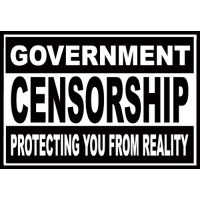Secret Patent Applications on the Rise

Among the thousands of patents reviewed and approved each year by the federal government, a select group is kept secret from the public—a group that has grown in number lately.
During the previous fiscal year, the U.S. Patent and Trademark Office (USPTO) approved 139 new “secrecy orders” on patent applications, according to data obtained by Secrecy News.
This secret classifying of inventions has been around since Congress adopted the Invention Secrecy Act of 1951, which authorizes government agencies to hide patent applications on grounds to protect “national security.”
Recently, though, the U.S. government has increased its use of secrecy orders, which totaled 5,445 by the end of FY2013—the highest number since 1994.
Among that total are 21 “John Doe” orders, which refer to secrecy orders that are imposed on private inventors who received no government or military support for their patent applications or their inventions.
“The government can take whatever technology it wants from a U.S. company and hide behind military secrecy in refusing just compensation,” according to a recent editorial in Aviation Week & Space Technology. The Secrecy Act forces some inventors to lose commercial opportunities for their inventions, depriving them of financial reward or other benefits.
Resulting court cases are often dismissed because “the executive branch [uses] the state secret privilege aggressively, often…claim[ing] that the very subject matter of a case is too secret to be heard by a court,” Rep. Jerrold Nadler (D-New York) told Secrecy News.
Steven Aftergood at Secrecy News reported that the information disclosed by the government revealed little other than aggregate numbers.
“The new invention secrecy statistics, while impressive in a way, are in the end opaque and unrevealing,” he wrote. “There is nothing in the raw numbers that would provide an indication of the validity of the decision to block disclosure of a patent application, whether a secrecy order was appealed or challenged, and what adverse impacts, if any, such an order might have had.”
-Noel Brinkerhoff, Danny Biederman
To Learn More:
Number of Secret Inventions Grew Last Year (by Steven Aftergood, Secrecy News)
Invention Secrecy Activity (Patent and Trademark Office)
- Top Stories
- Unusual News
- Where is the Money Going?
- Controversies
- U.S. and the World
- Appointments and Resignations
- Latest News
- Trump to Stop Deportations If…
- Trump Denounces World Series
- What If China Invaded the United States?
- Donald Trump Has a Mental Health Problem and It Has a Name
- Trump Goes on Renaming Frenzy






Comments